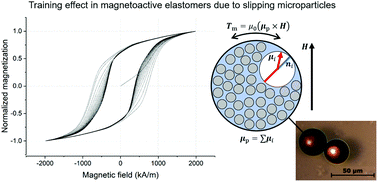Magnetization of magnetoactive elastomers under the assumption of breakable adhesion at the particle/matrix interface
Abstract
In this work we study the magnetization of magnetoactive elastomers (MAE) in which the interface between the matrix and magnetic particles is unstable and allows for slipping of the particles against the wall of their elastomer cavities. The estimate of the maximal angle at which each particle can decline its axis from the initial position is made based on cyclic measurement of several consecutive hysteresis loops at different maximal magnetic fields. A model of magnetization of magnetically hard multigrain particles in an elastic environment with allowance for their possible slipping is proposed. Results of modelling is in fair agreement with the experimental data obtained on MAEs whose polymeric matrix is made of polydimethylsiloxane and the magnetic filler is NdFeB spherical particles.



 Please wait while we load your content...
Please wait while we load your content...